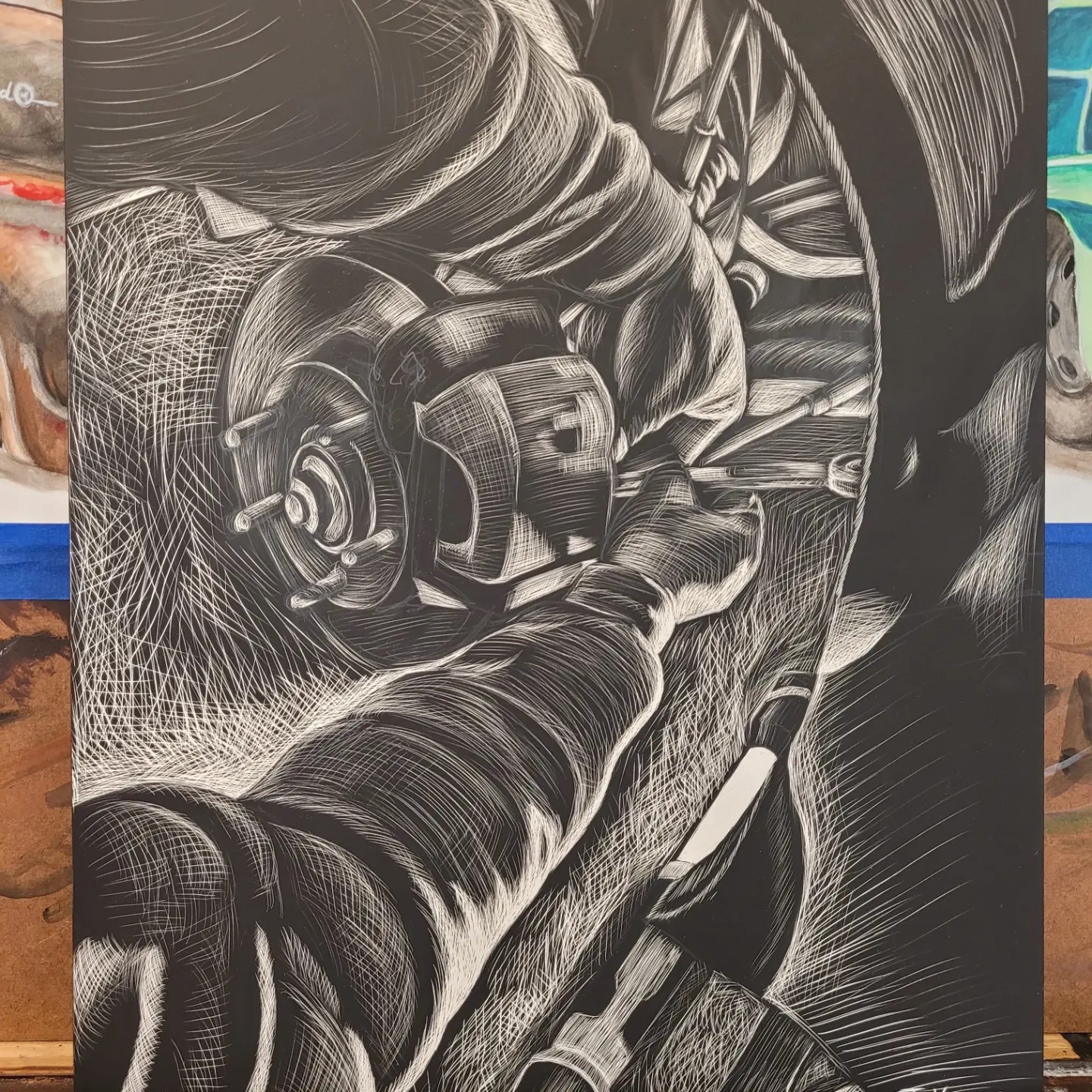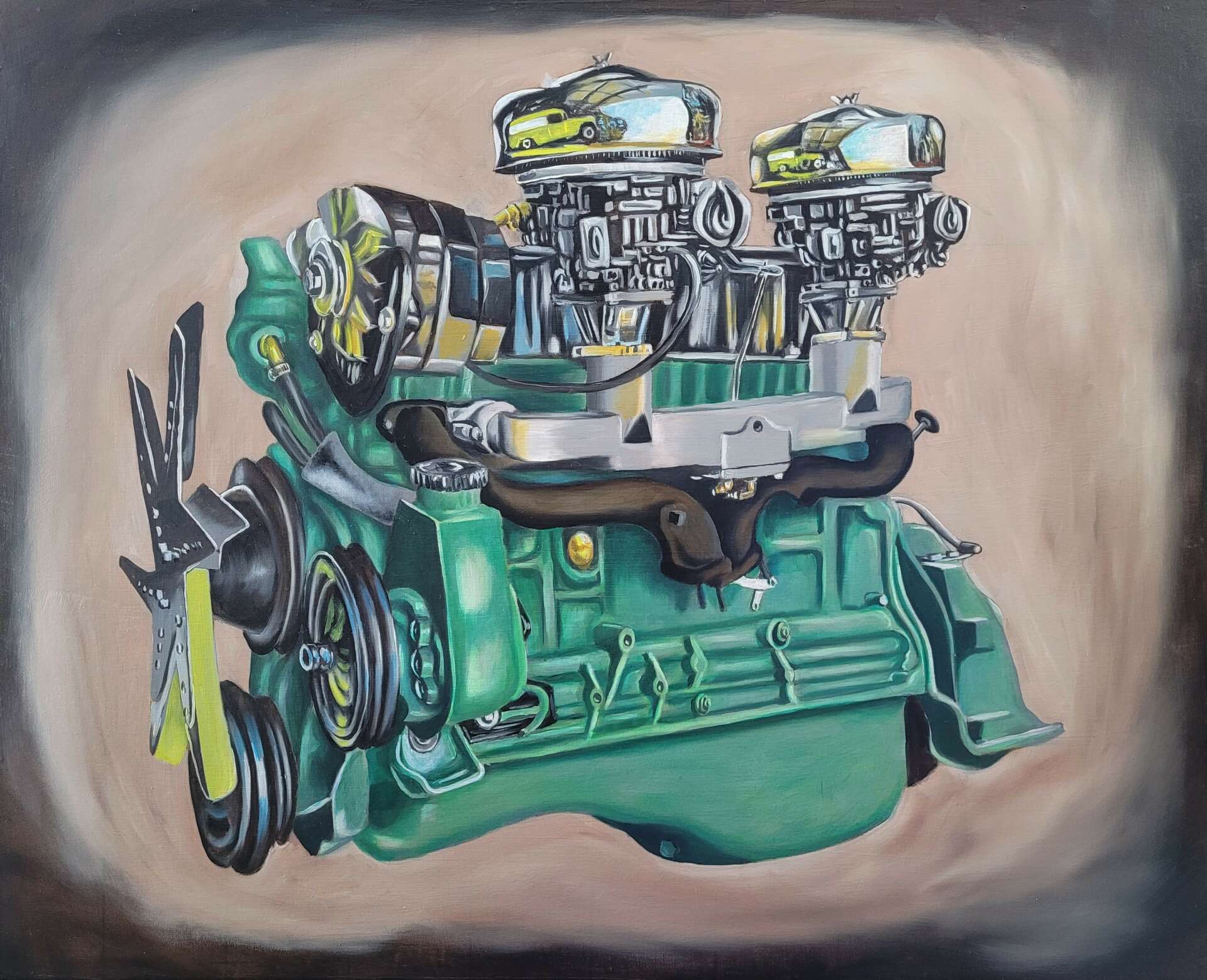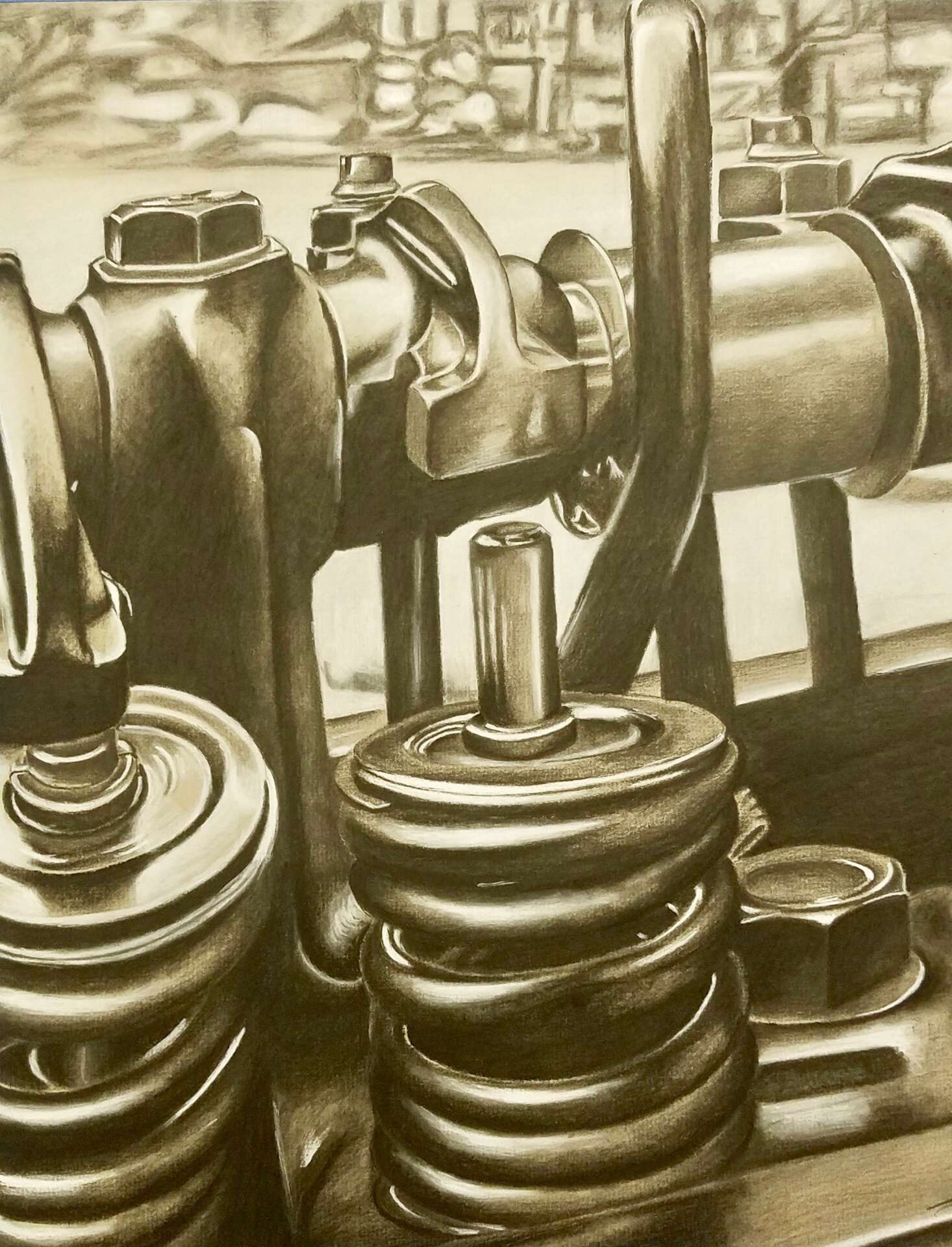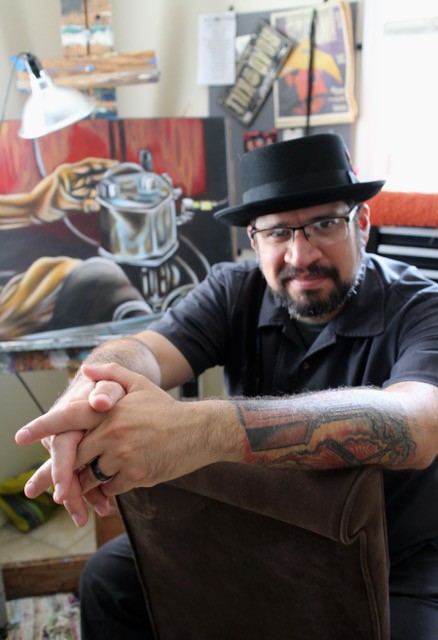We’re excited to introduce you to the always interesting and insightful Jason Valdez. We hope you’ll enjoy our conversation with Jason below.
Jason, thanks for taking the time to share your stories with us today Are you able to earn a full-time living from your creative work? If so, can you walk us through your journey and how you made it happen?
I have been very fortunate in that I have been able to earn a stable living working in the artistic field as an instructor. After completing my Bachelor’s degree in the fall of 2007, I began my career in education as a substitute teacher at my old high school. I was a little apprehensive at first, but I quickly realized that I did enjoy teaching and being in the classroom. In the fall of 2008, I was offered my first full-time teaching position at Mission High School in the Rio Grande Valley. From 2008 to 2014 I was a member of the MHS Art Department, which gave me the opportunity to now only grow as an educator but also as a practicing studio artist. I learned almost as much about painting, drawing, and ceramics from my students and colleagues as I did during my undergraduate years. Having to teach the various studio disciplines to my students pushed me to hone my craft to a higher level of quality. I also truly enjoyed watching my students grow and progress through the different level art classes that we offered. I left my position in the fall of 2014 in order to pursue my Master of Fine Arts degree at Texas A&M University-Corpus Christi. While I did want to continue teaching, I also wanted to challenge myself and see if I could earn a terminal degree. Doing this is what allowed me to reach my ultimate goal of teaching at the collegiate level. Since the fall of 2017 I have been working as the Associate Professor of Art/Gallery Director at Victoria College in Victoria TX.
Looking back on going on 15 years of teaching and making art, I don’t know if I could have done anything different to speed up the process. I know I wasn’t ready for the challenge of graduate school right after finishing my Bachelor’s, so I think having those six years to work gave me the time to grow as an artist. My work experiences gave me the maturity that helped me navigate my three years in the grad program at TAMU-CC.


Jason, love having you share your insights with us. Before we ask you more questions, maybe you can take a moment to introduce yourself to our readers who might have missed our earlier conversations?
Well, to begin with, my main area of concentration is 2D Art (painting, drawing, and printmaking). Along with being a full-time instructor, I have maintained a consistent studio practice as an artist. My work is influenced by my working-class upbringing. I grew up around welders, mechanics, electricians, and military service members and that blue-collar spirit has had an enormous impact on my outlook. I approach my craft as an artist no different than a plumber or electrician. I went to school for specialized training in my craft….I was taught how to use special tools and equipment in order to create some of my works…etc. I see a number of similarities between the vocational trades and the visual arts disciplines. They both require critical thinking and creative problem solving and they both are engaged with tangible things. More than anything, I truly enjoy being able to create something with my hands. I love working with tangible things and seeing them take shape…whether it’s a piece of art or an old engine that I’ve been working on. I like to explore these ideas in my work by using industrial themes and images. Since my father is a diesel mechanic by trade, I am attracted to images of old engines; primarily ones used for heavy work. I enjoy the challenge of rendering all the details of an engine or machine using both traditional and non-traditional painting techniques. Just like working with a piece of heavy equipment, I have to work out tangible problems while working in the studio and find a practical solution to those problems.
Currently I am exploring this concept of creative problem solving by digging deeper into the idea of the improvised fix, or the “Chicanaso”. I have memories of my dad rigging stuff together to work when all logic said it was impossible and I’m fascinated by that “can-do” attitude. Some of my more recent pieces have titles like, “El Maestro replaces a tie-rod in the cold”, referencing the Spanish slang term for handy-man or jack of all trades (El Maestro). To me, the same creativity that goes into the artist’s studio is the same creativity that a trades-person will use in their respective field.
We’d love to hear a story of resilience from your journey.
Sure thing. My grad program was very demanding, as most tend to be, but I didn’t have a lot of money to live off of at the time. I was lucky enough to get a small scholarship and a teaching assistantship, but I still needed to work off campus to make ends meet. Throughout the three years I was at TAMU-CC I worked as a part-time gallery assistant for the Art Museum of South Texas. Whenever a new art exhibition would go up, I was part of a group of student workers who would get called in to take down the old show and install the new one. During the summers I worked at customer service jobs to make extra money. During my final semester I was working 3 jobs AND going to school at the same time (Fridays at Sears, Art Museum of South Texas, teaching at the university). It was a struggle for sure, but it paid off.


What can society do to ensure an environment that’s helpful to artists and creatives?
I think the best thing that society as a whole can do to support artists is realize how much the arts impact our daily lives. The ability to think and express ourselves creatively is one of the defining characteristics that makes us human, and I think that gets lost in the daily grind. Every time I talk to someone about what I do for a living they usually respond with, “Oh, that’s cool! I wish I could do that, but I can’t even draw a stick figure.” or on a few occasions, “Oh wow! That must be nice to have a hobby as your job.”. This bothers me because people should understand that creativity is not just confined to the studio of the visual artist, it’s literally in everything we do. I explain it like this to my students; if you picked your outfit today for any other reason besides covering your body from the environment, then you made an artistic choice. If you picked your vehicle for any other reason besides it being a simple mode of transportation, then you made an artistic choice. Think about it, when we want entertainment we look to actors, writers, and storytellers. When we want to express a certain mood or access a cherished memory, we usually turn to music, literature, or TV shows. The colors of restaurants are specifically chosen to excite us about buying their food. All of these things are ways that the arts influence our daily lives. Actors, musicians, writers, and visual artists all put in a lot of time and effort honing their crafts and I believe we as a society need to acknowledge that level of commitment and treat them like the professionals that they are. Simply put, there is a reason that a custom painting from a living artist is going to cost a few hundred or even a few thousand dollars. You’re paying them not only for their time, but for their experience.
Contact Info:
- Website: https://www.victoriacollege.edu/news/2021/08/30/vc-art-professor-has-work-chosen-for-national-exhibit
- Instagram: https://www.instagram.com/jvaldez_art/?hl=en
- Youtube: https://www.youtube.com/watch?v=bgVTDl8wL3s
Image Credits
David Fuentes for taking the headshots


